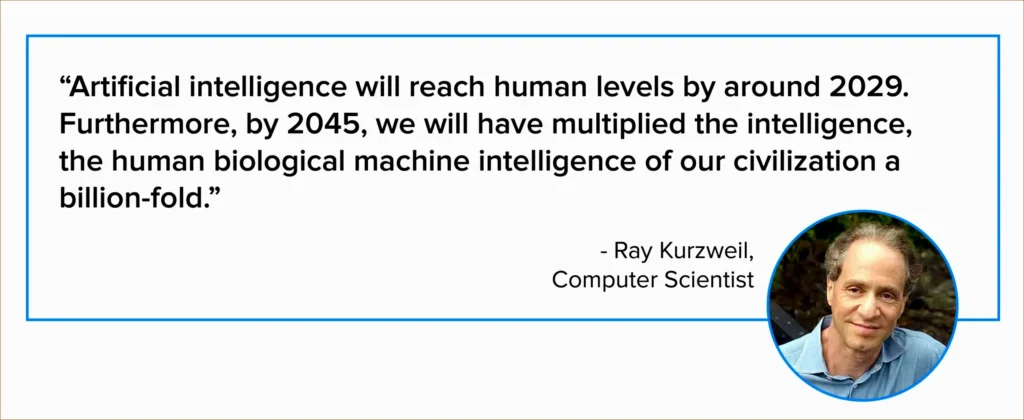As we architect a future rife with technology, the realm of sports is undergoing an exhilarating metamorphosis. Statistical evaluation has forever been a cornerstone of the sports industry; however, one remarkable technological innovation has surged forward to radically enhance audience engagement and strategic gaming: the emergence of artificial intelligence (AI) in sports.
Within the past two decades, AI has wrought a profound transformation in the way we engage with and scrutinize sports. Through artificial intelligence and machine learning (ML), the landscape is not merely smarter; it’s revolutionized—empowering athletes, broadcasters, advertisers, and ultimately, the viewers who gain access to instantaneous statistics and insights.
Crucially, AI’s prowess in sports forecasting acts as a compass, steering informed decision-making to new heights. The multitude of benefits it heralds is staggering.
While the applications of AI now fill the sports arena, their discussion remains surprisingly muted among industry experts. The potential AI has when melding with business and enterprise practices cannot be underestimated. Observing the finesse and precision AI introduces to gameplay, it’s clear that sports AI solutions are primed for tremendous growth in the coming years.
Herein, we delve into the transformative power AI wields over the sports industry, exploring the myriad applications and exploring its bright future in this domain. So, prepare for an exhilarating journey through the innovative intersection of technology and athletics.
AI in Sports and Gaming: Noteworthy Stats
The expansion of AI in the sports industry has been nothing short of remarkable. This surge can be attributed to technological advancements in AI, robust investments from sports organizations, and an escalating hunger for data-infused insights. It’s projected that the global sports analytics market will skyrocket to a staggering $22 billion by 2030.
Moreover, the AI sports market is also forecasted to reach an impressive $19.9 billion by the same year. The ascent of AI adoption among sports teams, leagues, and tech providers showcases a burgeoning momentum that is unlikely to wane anytime soon.
Numerous factors contribute to this growth, including the heightened demand for player monitoring and tracking, dynamic real-time sports data analytics, and even AI’s influence in sports betting and predictions. The rise of virtual assistants and chatbots aimed at engaging fans adds another layer to this burgeoning industry.
The data speaks for itself; AI is enriching the sports industry’s fabric with detailed insights and analytics. Not only do popular sports embrace this technology, but specialized enterprises also rely on AI and machine learning to drive their operations forward.
Understanding the AI Framework in Sports
Artificial intelligence encapsulates a vast array of “smart” technologies, continuously transforming an array of sectors by harnessing data for actionable insights, automating tasks, and enhancing operational efficiency. The AI framework within sports hinges on diligent data collection and nuanced analysis.
This involves everything from real-time player tracking and performance statistics to predictive modeling, creating a fertile ground for innovations in injury prevention, fan interaction, and immersive experiences. The ultimate goal? To intensify the competitive spirit on and off the field.
Key Uses of AI in Sports
-
Talent Identification and Recruitment
The multifaceted process of identifying and acquiring talent is enhanced through biomechanical analysis, performance measurement, and advanced recruitment methodologies, painting a clearer picture of potential athletes’ abilities. -
Game Analytics
By integrating technologies like ball-tracking systems and analytical tools for match events, AI is reshaping how we perceive games, driving richer insights into team performance and strategy alignment. -
Training and Coaching
The intricacies of sports training evolve with AI, as coaches employ data-driven approaches for tactical planning, injury modeling, and team formation assessments. -
Predictive Modeling
AI models anticipate outcomes by analyzing a plethora of data, from biometrics to game scenarios, thus informing strategies that prioritize athlete safety and competitive edge. -
Engagement with Fans
Tailored content and personalized experiences are at the heart of AI-driven fan engagement strategies, fostering loyalty and deeper connections between fans and their favorite sports. -
Immersive Experiences
By harnessing augmented reality and gamified features, AI amplifies viewer experiences, making each game an unprecedented journey into sporting spectacle. -
Player Performance Analysis
Utilizing wearable technologies and predictive analytics, AI equips athletes with insights into their performance, allowing for meticulously tailored training regimes. -
Scouting and Recruitment
Sophisticated data aggregation methods sharpen decisions regarding player recruitment, ultimately bolstering team composition and resilience. - Automated Sports Journalism
With automated platforms converting score data into engaging narratives, AI is paving the way for rapid and efficient sports journalism, ensuring extensive coverage without a hitch.
The Future of AI in Sports: A Bright Horizon
The horizon gleams brightly for AI’s role in transforming sports—not only enhancing competitiveness but also streamlining operations across the board. As AI strategies proliferate, stakeholders within sports—from strategists and advertisers to teams and fans—are poised to reap substantial benefits.
Whether venturing into AI app development or seeking to harness robust AI-driven solutions, now is an opportune moment to dive into the sports industry’s AI renaissance.
AI is weaving itself into the very fabric of sports culture—a story only beginning to unfold, filled with promise and endless opportunities for innovation and engagement. The field is set for a thrilling renaissance as we watch sports evolve with the invaluable integration of artificial intelligence, forever altering not just how games are played but how they’re experienced.

